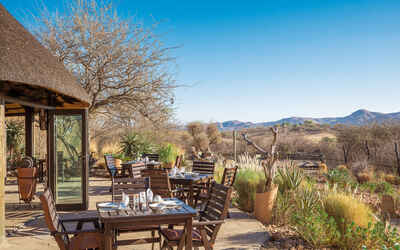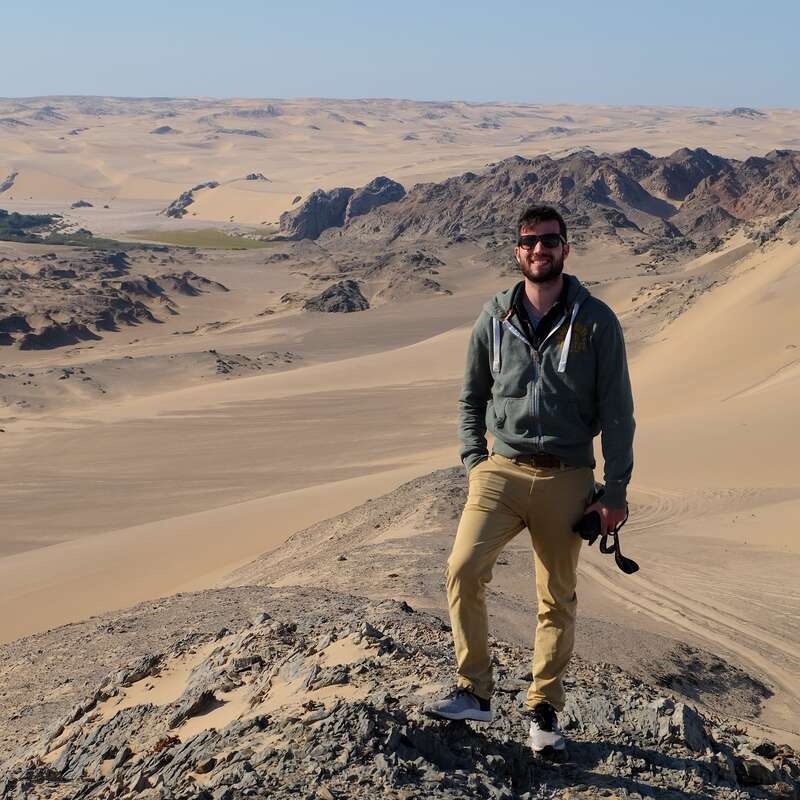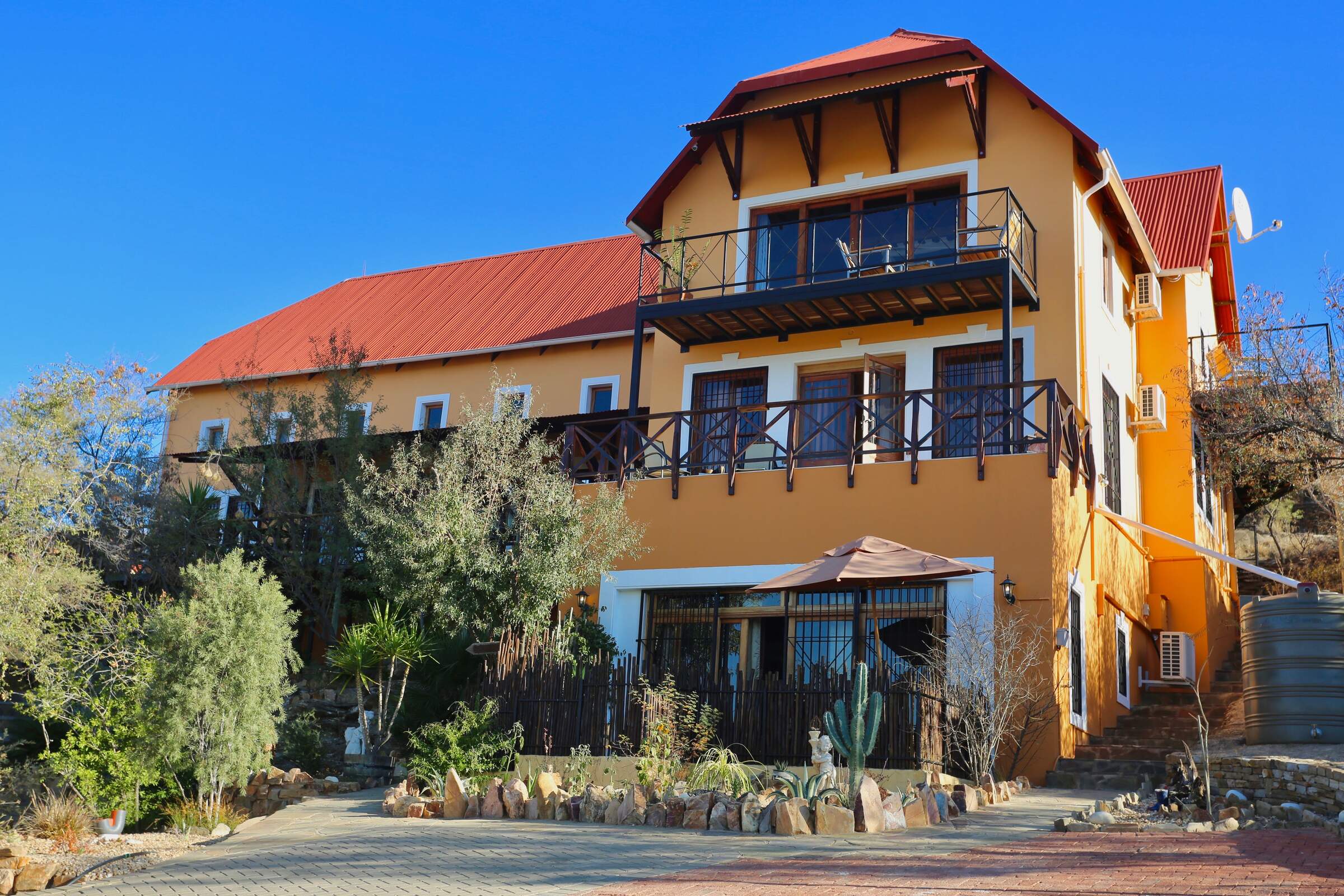About Immanuel Wilderness Lodge
Situated about 20 minutes’ drive north of Windhoek or around an hour drive from the international airport.
The family-run Immanuel Wilderness Lodge is in a peaceful location, worth considering for your first or last night in Namibia if you are not enamoured with the idea of staying in the city of Windhoek itself.
Immanuel Wilderness Lodge is a charming option if you are looking for a comfortable and wonderfully hospitable spot to overnight whilst on a self-drive trip around Namibia. The only activity available on site is a short nature trail so we don't recommend more than one night here unless you just want pure relaxation time.
Our view
Immanuel Wilderness Lodge is a charming option if you are looking for a comfortable and wonderfully hospitable spot to overnight whilst on a self-drive trip around Namibia. The only activity available on site is a short nature trail so we don't recommend more than one night here unless you just want pure relaxation time.
Accommodation
9 Rooms
Children
Best for aged 5+
Open
All year
Activities

Self-guided walking
Traveller reviews of Immanuel Wilderness Lodge
20 real, un-edited reviews from Expert Africa's travellers.
Arrived 15 Nov 2024, 1 nights
"Immanuel Wilderness Lodge review"
Overall rating: Excellent
Arrived 7 Oct 2024, 1 nights
"Immanuel Wilderness Lodge review"
Overall rating: Excellent
Arrived 13 Nov 2023, 1 nights
"Immanuel Wilderness Lodge review"
Overall rating: Excellent
Arrived 28 Oct 2022, 1 nights
"Immanuel Wilderness Lodge review"
Overall rating: Good
Arrived 12 Apr 2019, 1 nights
"Immanuel Wilderness Lodge review"
Overall rating: Excellent
Arrived 5 Sep 2018, 1 nights
"A lovely first night in Namibia!"
Overall rating: Good
Arrived 18 Sep 2018, 1 nights
"Immanuel Wilderness"
Overall rating: Excellent
Arrived 12 Feb 2018, 1 nights
"Very good stopover en route"
Overall rating: Excellent
Arrived 28 Nov 2017, 1 nights
"Sadly no longer a wilderness"
Overall rating: Good
Arrived 11 Nov 2017, 1 nights
"Immanuel Wilderness Lodge review"
Overall rating: Average
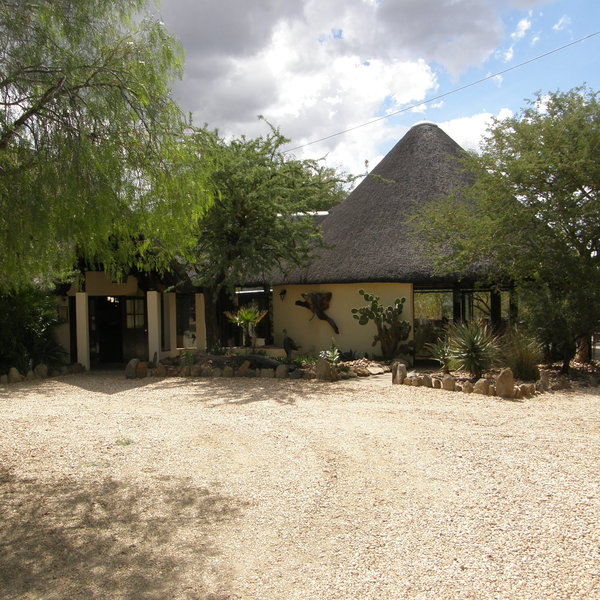
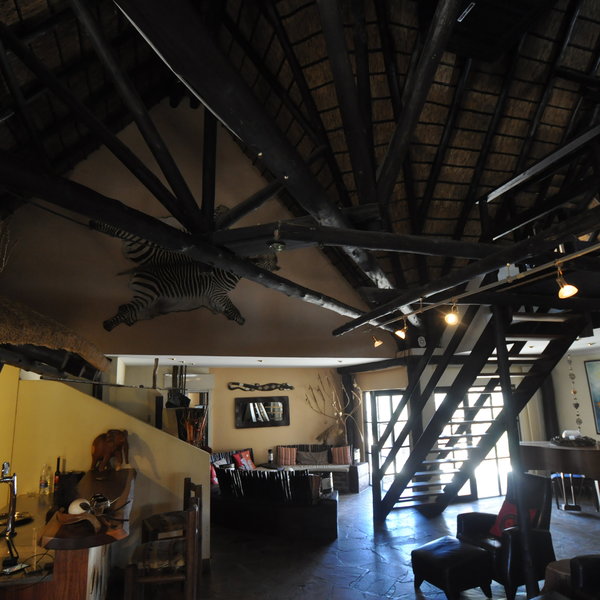
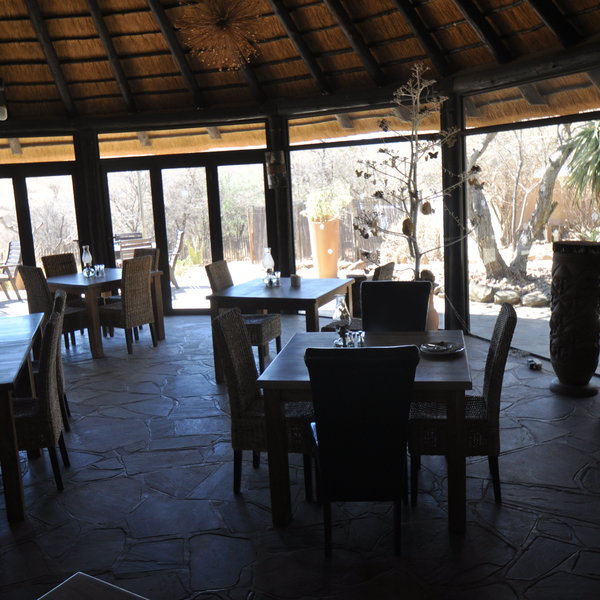
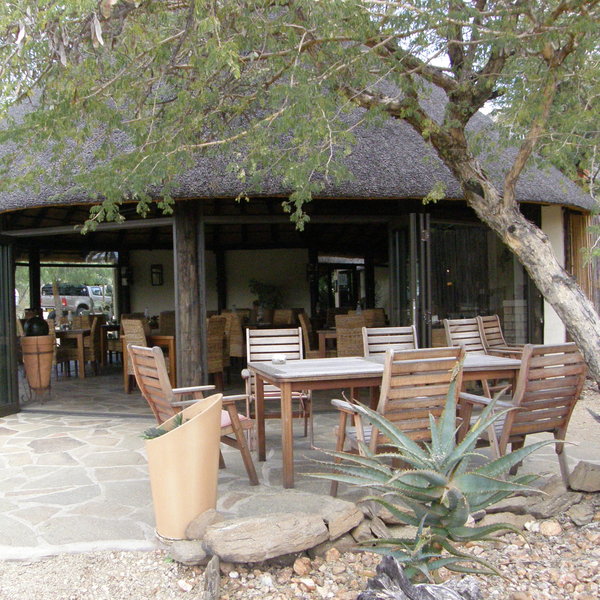

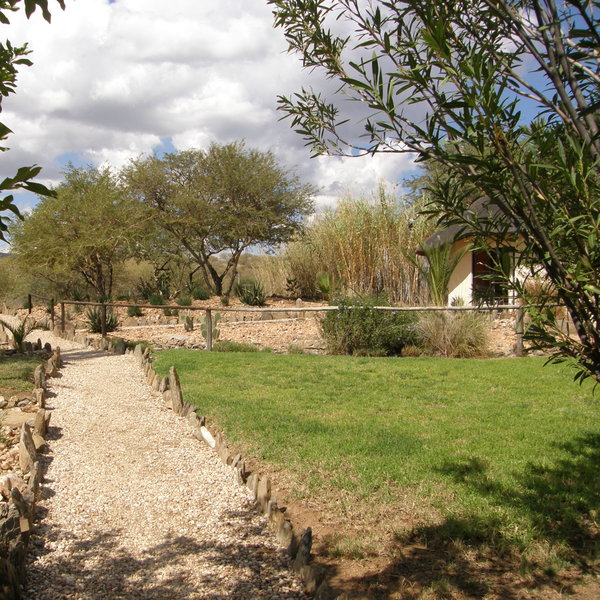

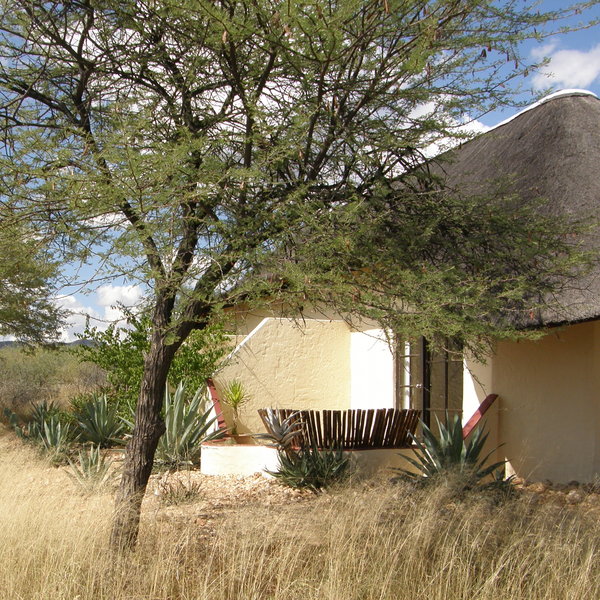
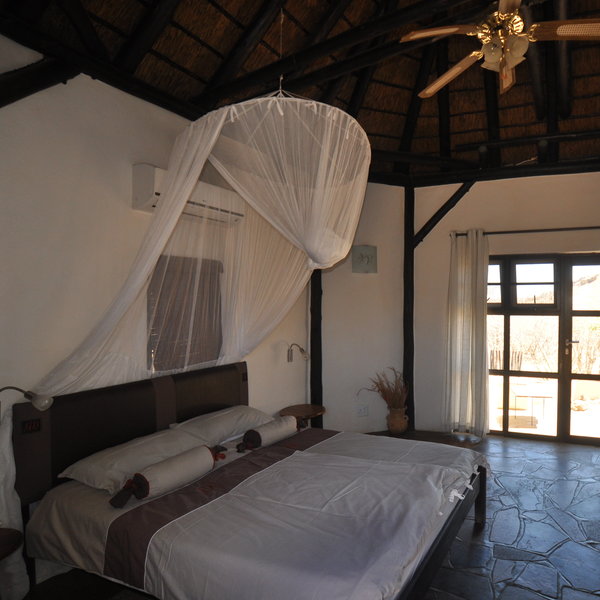
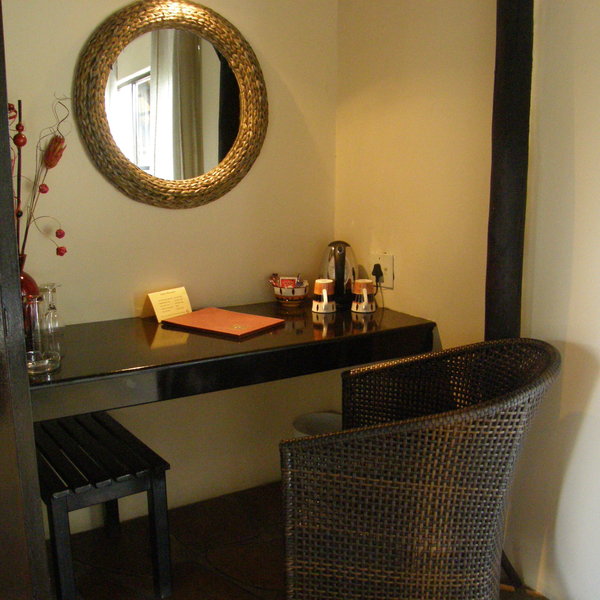
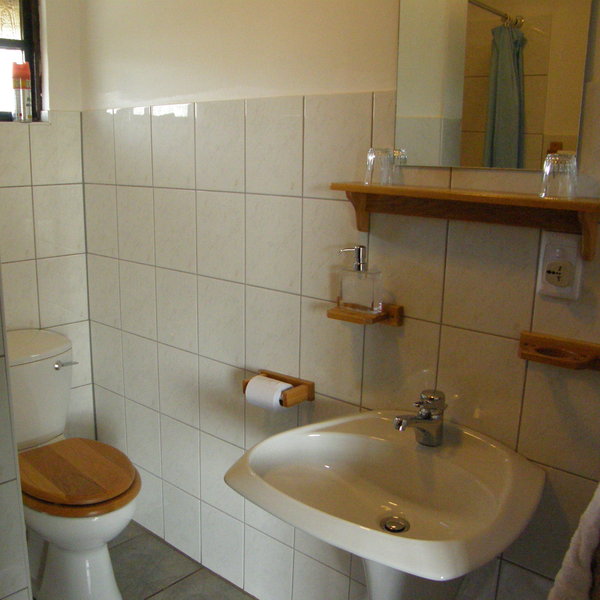
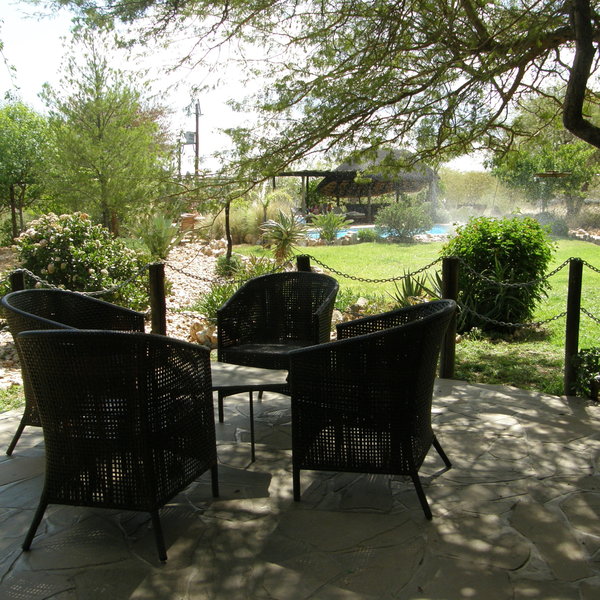
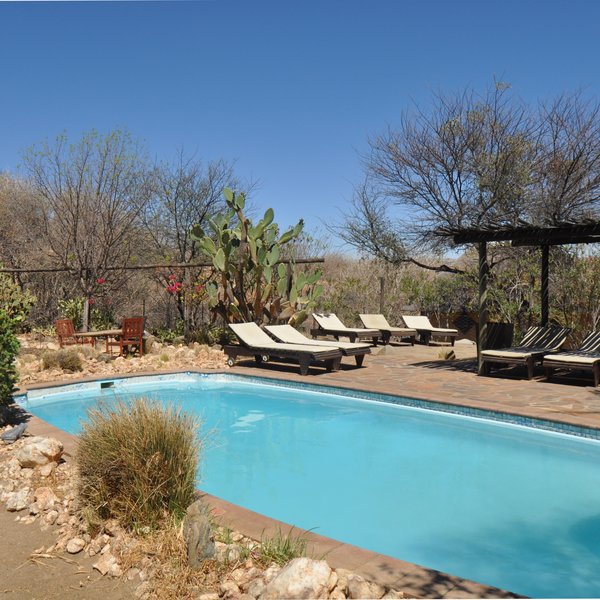
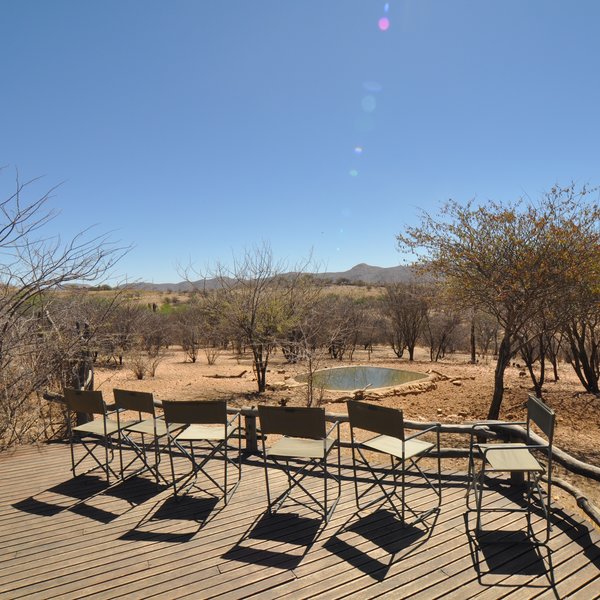
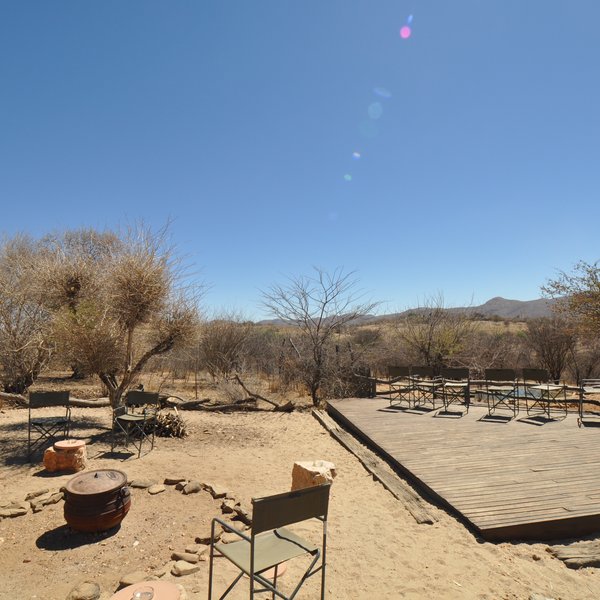
Expert Africa's gallery
When we travel we take lots of photos ourselves to give you a real and un-edited view of the trips. See our 15 pictures of Immanuel Wilderness to get the candid view.
View galleryImmanuel Wilderness Lodge: Our full report
Situated about 20 minutes’ drive north of Windhoek or around an hour drive from the international airport.
The family-run Immanuel Wilderness Lodge is in a peaceful location, worth considering for your first or last night in Namibia if you are not enamoured with the idea of staying in the city of Windhoek itself.
Built on ten hectares of land, and on a rise overlooking the rolling hills that make up this area of Namibia, this small, delightful lodge is owned and run by Stephan and Sabine Hock. The Hocks emigrated here from Germany in 2007 to take over the lodge and they remain very involved with the day-to-day business, creating an atmosphere of genuine hospitality and warmth.
Guests at Immanuel are accommodated in nine rooms built in three blocks, each covered by a thatched roof. Simple, stylish and comfortable, they are fitted with rustic furniture – some of it homemade. Each has an en-suite bathroom, ceiling fan, air conditioning, mosquito nets above the double or twin beds, tea and coffee facilities and a private patio with chairs. Thanks to special signal boxes imported from the USA, the owner told us that WiFi also reaches to the rooms. Two of the rooms would work well for families, as both have a fun 'attic' floor reached by steep steps that are more like a ladder and complete with twin beds suitable for children.
There is an inviting swimming pool set in a small lawn, and an adjacent thatched 'lapa' where guests can relax in the shade. The homestead also features a menagerie of pets including dogs, ducks, ostriches and tortoises. A small number of springbok and impala roam freely on the ten-hectare plot and they are often attracted to the waterhole, which is just in front on the large terrace and braai area.
A recent addition to the property, which we noted on our latest visit in October 2016, was the construction of a specific therapy hut. A local therapist can be booked to give massages and treatments to the guests of Immanuel Wilderness Lodge which range in price between N$350 and N$650.
Stephan Hock's hobby is cooking and he produces delicious lunches and four-course dinners which are served in the restaurant – which is also open to those who are not staying at the lodge. Found in the thatched main building, the restaurant has french windows that open out onto a small garden and lovely views. There is also a reception, lounge and bar here.
A short nature trail around the property will give guests the opportunity to explore.
Activities
Self-guided walking
Families & children
- Attitude towards children
- Families with children of all ages are welcome at Immanuel Wilderness Lodge.
- Property’s age restrictions
- There is no age restriction.
- Equipment
- There are two family rooms, each comfortably sleeping a family of four.
- Generally recommended for children
- Although Immanuel Wilderness Lodge does accept children of all ages, we would recommend it for children aged over five years.
- Notes
- The pool is unfenced so children require parental supervision. The paths around the lodge are also quite uneven. There are quite a number of animals around the property including large dogs which, although friendly, may be unnerving for small children.
Food & drink
- Usual board basis
- Bed & Breakfast
- Food quality
- Stephan is an acclaimed chef and takes great pleasure in providing high-quality food to guests at Immanuel Wilderness Lodge.
For breakfast, we understand that a good spread of meats and cheeses is laid out, including zebra salami and smoked kudu carpaccio as well as the normal breads, cereals, fruits and yoghurts.
Although we have not eaten here we understand that dinner is normally four courses, using local produce and meats. When we visited in October 2016, the evening’s menu started with spinach cappuccino, followed by a salad, with oryx steak as the main course and a dessert of homemade ice cream
Light lunches are also available. - Dining style
- Individual Tables
- Dining locations
- Indoor Dining
- Drinks included
- Drinks are available at extra cost, including a good selection of wines as well as bottled water, soft drinks, beer and spirits. These can be ordered throughout the day from the guesthouse waiting staff.
Getting there
- Location
- Windhoek, Namibia
- Ideal length of stay
- Expert Africa would recommend a one-night stay at Immanuel Wilderness Lodge either at the start or the end of a self drive holiday in Namibia.
- Directions
- About 10km north of Windhoek, turn left onto the D1473 (Brakwater), looking out for the signpost to Immanuel Lodge. Then at the T-junction turn north (right) onto the D1474. After around 3km, turn right at the sign to Immanuel Lodge and continuing through their gate and down the relatively bumpy drive to the lodge.
- Accessible by
- Self-drive
Communications
- Power supply notes
- There’s a back-up generator in case of power outage.
- Communications
- There’s WiFi in the rooms and in the central area.
- TV & radio
- There are no televisions in the rooms.
- Water supply
- Mains
- Water supply notes
- The showers are plumbed, the toilets are flush and there is hot water.
Health & safety
- Malarial protection recommended
- No
- Medical care
- There are doctors and hospitals nearby in Windhoek.
- Dangerous animals
- Low Risk
- Security measures
- The land surrounding the lodge is fully fenced and the access to the lodge in gated.
- Fire safety
- Fire extinguishers are kept in the common areas of the guesthouse.
Useful info
- Disabled access
- On Request
- Laundry facilities
- On Request.
- Money
- There’s a safe provided in each room.
- Accepted payment on location
- Payments may be made by credit card (MasterCard, Visa, Diners and American Express) and in cash (Namibian dollars and South African rand).
Plan and book your trip with Expert Africa
All of our trips are tailor-made, so we'll always adapt them to suit you. Talk to an Expert and let us plan and arrange your perfect trip.

Talk to an Expert
Call or email us now! We’ll match you with the Specialist in our team who is best suited to help you. Then together we can start planning your trip.

Set up your itinerary
Based on our experience and your ideas, your specialist will create a detailed, costed itinerary. We’ll refine it together, until we have a trip that you’re perfectly happy with.

Prepare for your trip
The same Specialist will make the seamless arrangements for your trip, send you detailed travel documents, and be available to answer any questions before you depart.

Travel with peace of mind
After you set off, you’ll be cared for by our partners in Africa, most of whom have worked with Expert Africa for decades. And if you ever need us urgently, we’re available 24/7.

When you return
We love to learn about your trip, and so will always be grateful if you’ve the time to give feedback to your Specialist when you return.
Immanuel Wilderness Lodge's location
Look closer at the environment and surroundings of Immanuel Wilderness.
Other lodges in Windhoek
Alternative places to stay in this same area.
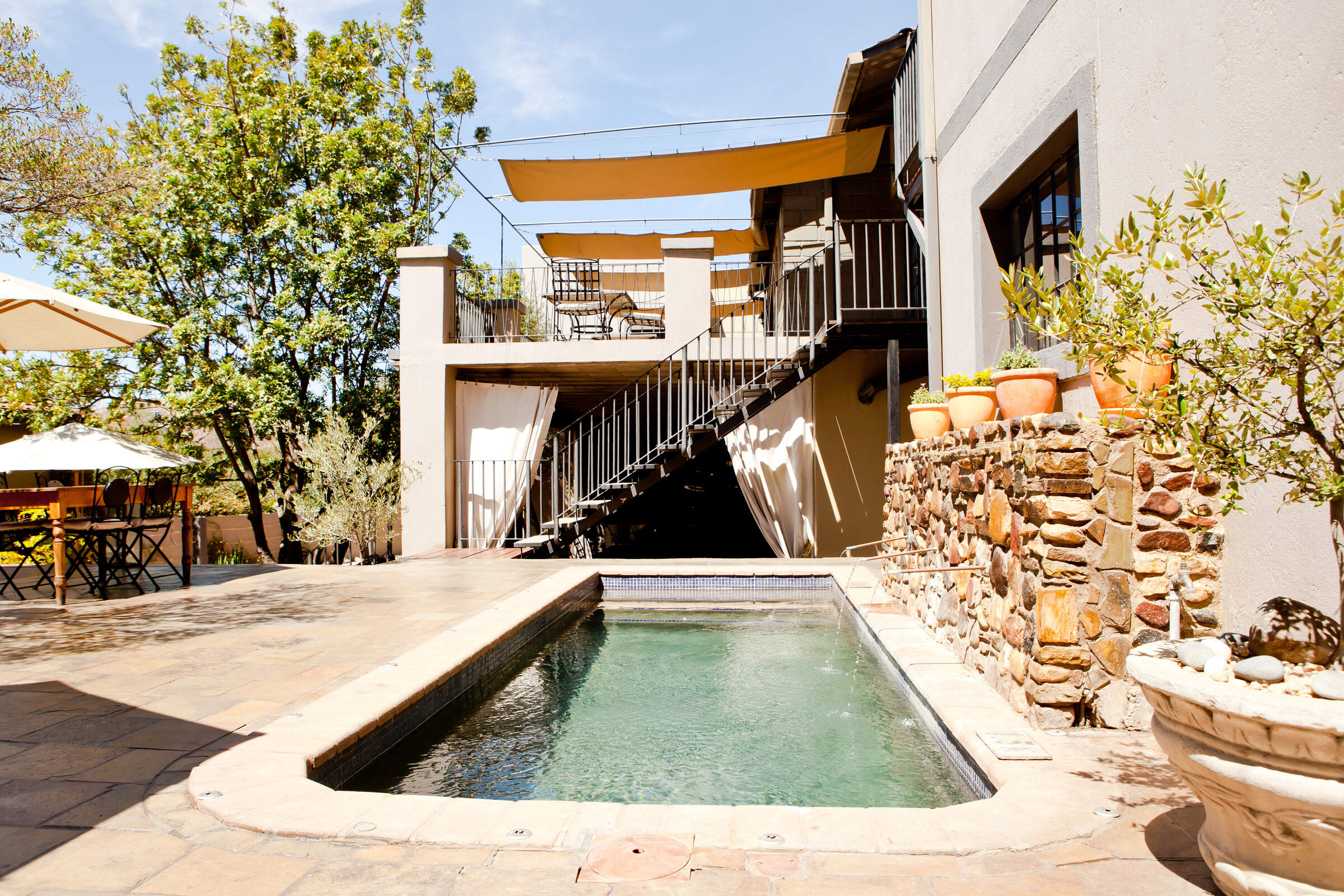
Olive Grove
In a quiet Windhoek suburb, Olive Grove is one of our favourite guesthouses: stylish, with a friendly, welcoming atmosphere and excellent food.
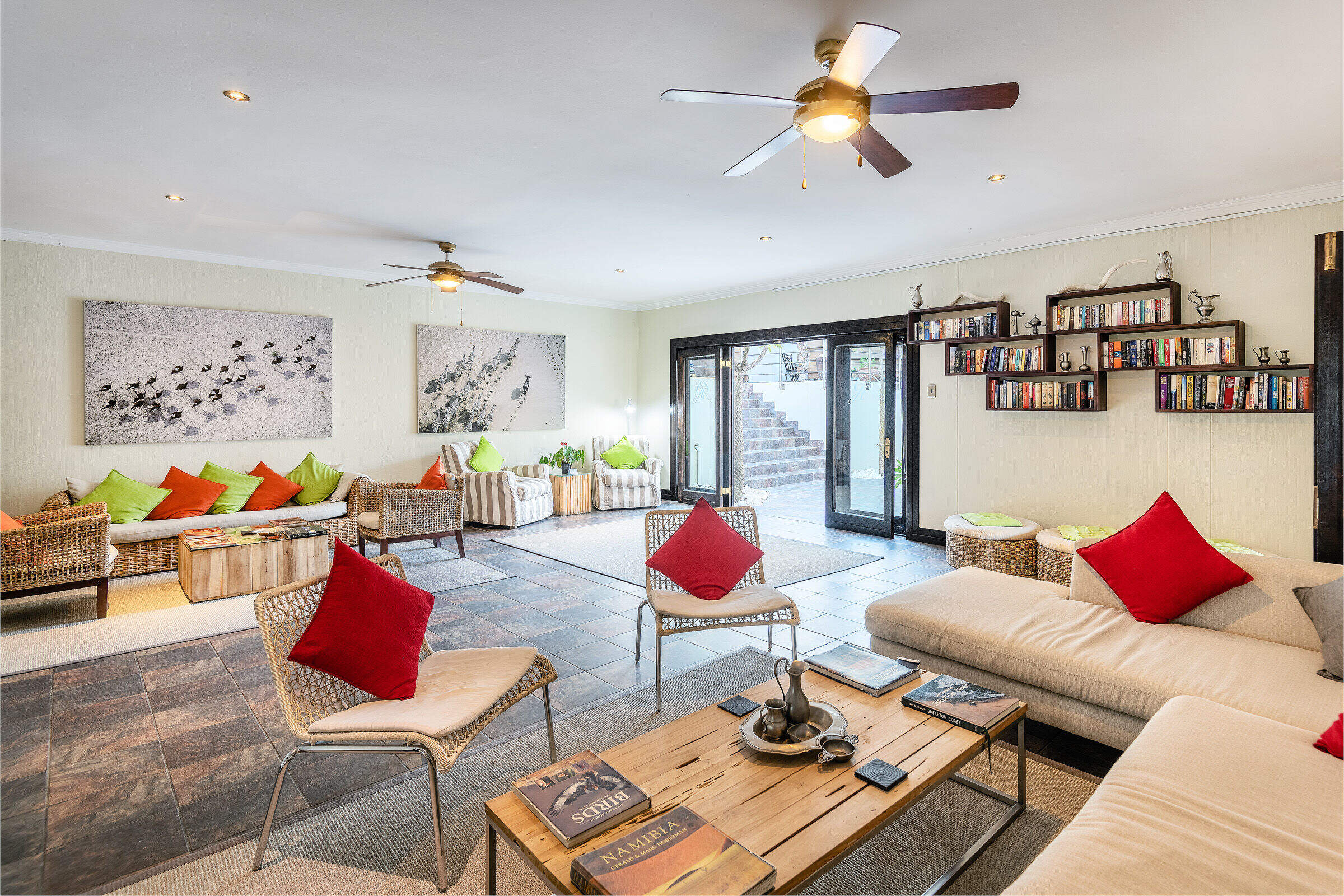
Galton House
A cool stylish sanctuary in a quiet suburb of Windhoek, Galton House boasts a pool and a restaurant that serves breakfast, lunch and dinner.
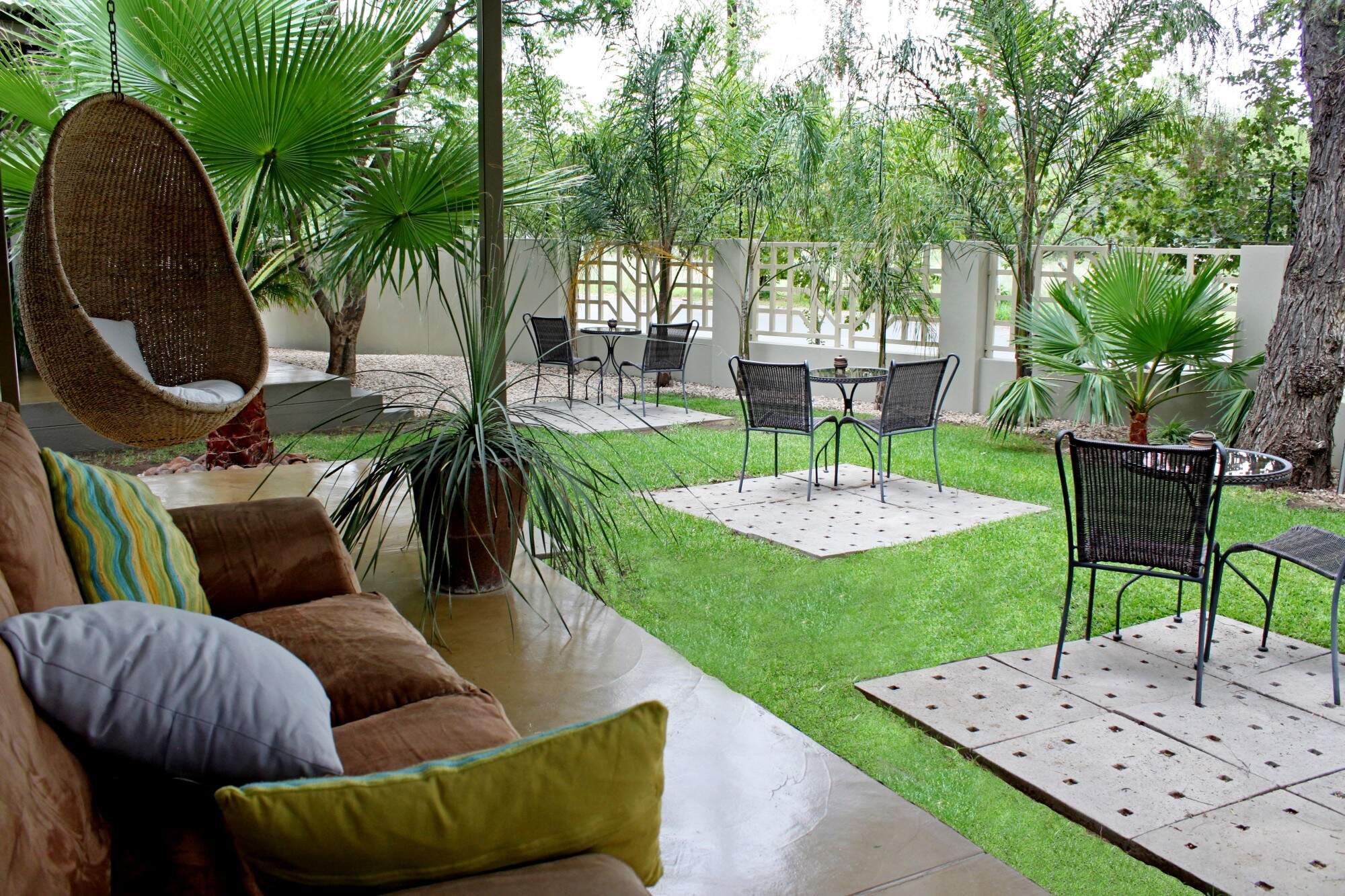
Elegant Guesthouse
The Elegant Guesthouse is a friendly, comfortable establishment with a lovely, tranquil garden, and is a good choice for an overnight stay in Windhoek.
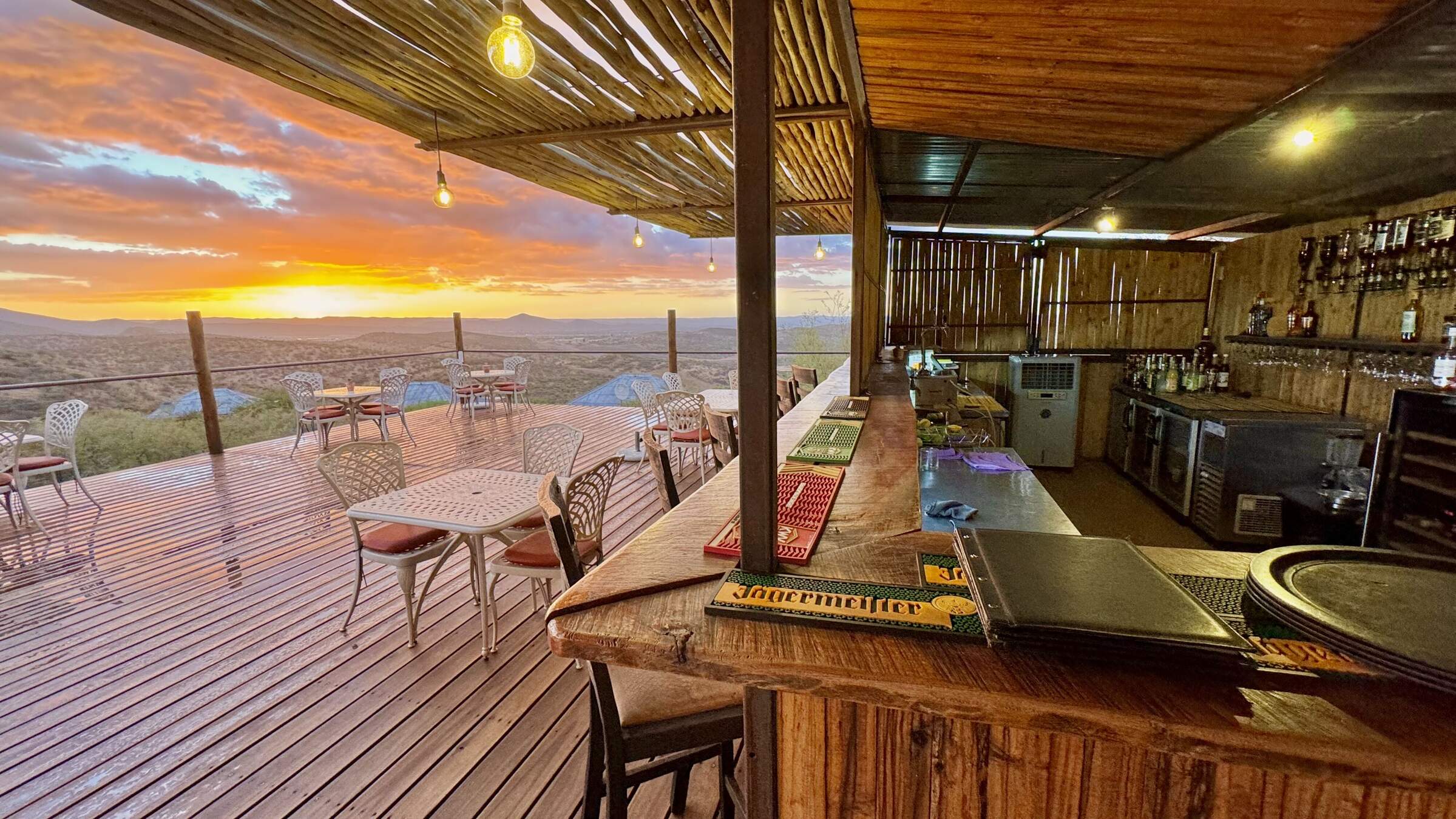
River Crossing
Secluded on a private game reserve between Windhoek and the international airport, River Crossing is a tranquil place to start or end a trip.
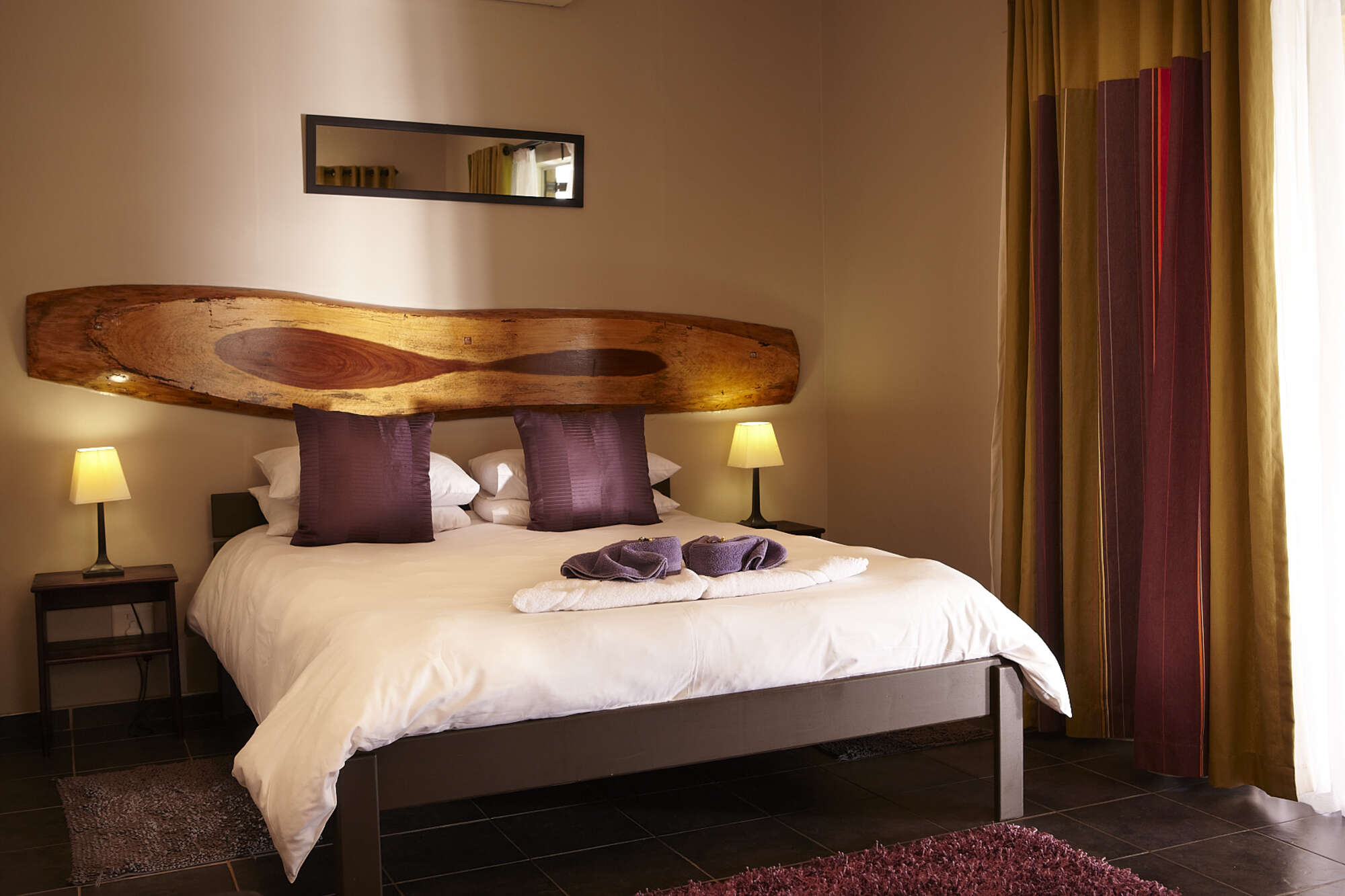
Villa Violet
Villa Violet is a friendly, owner-run guesthouse in a residential area of Windhoek, just a few minutes' drive from the city centre and numerous restaurants.

Sonneneck Guesthouse
Set in tranquil gardens just a few minutes' drive from the centre of Windhoek, Sonneneck Guesthouse is building on the success of its predecessor.
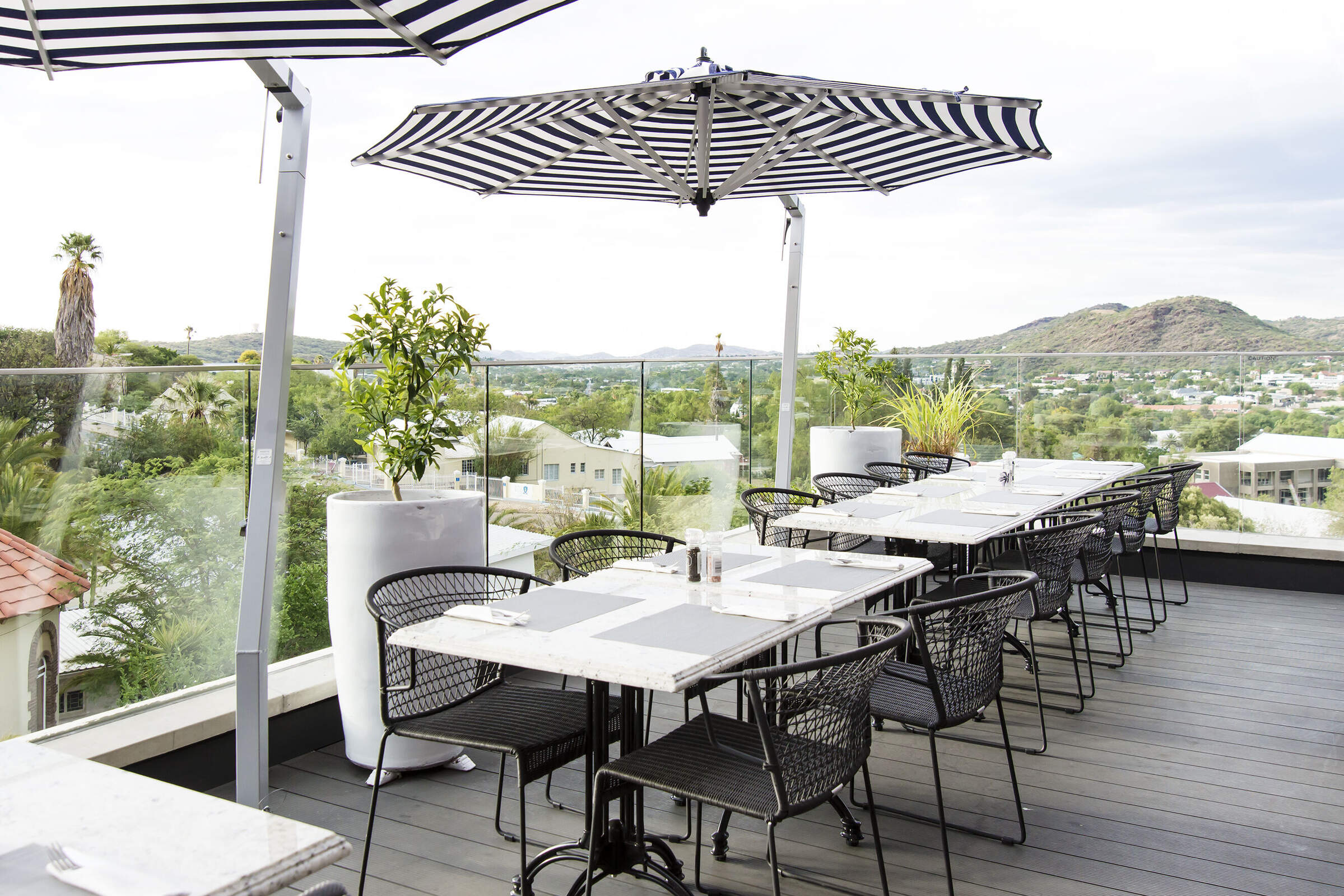
Weinberg Hotel
In a quiet upmarket suburb of Klein Windhoek, the stylish Weinberg has a friendly, welcoming atmosphere and luxury facilities.
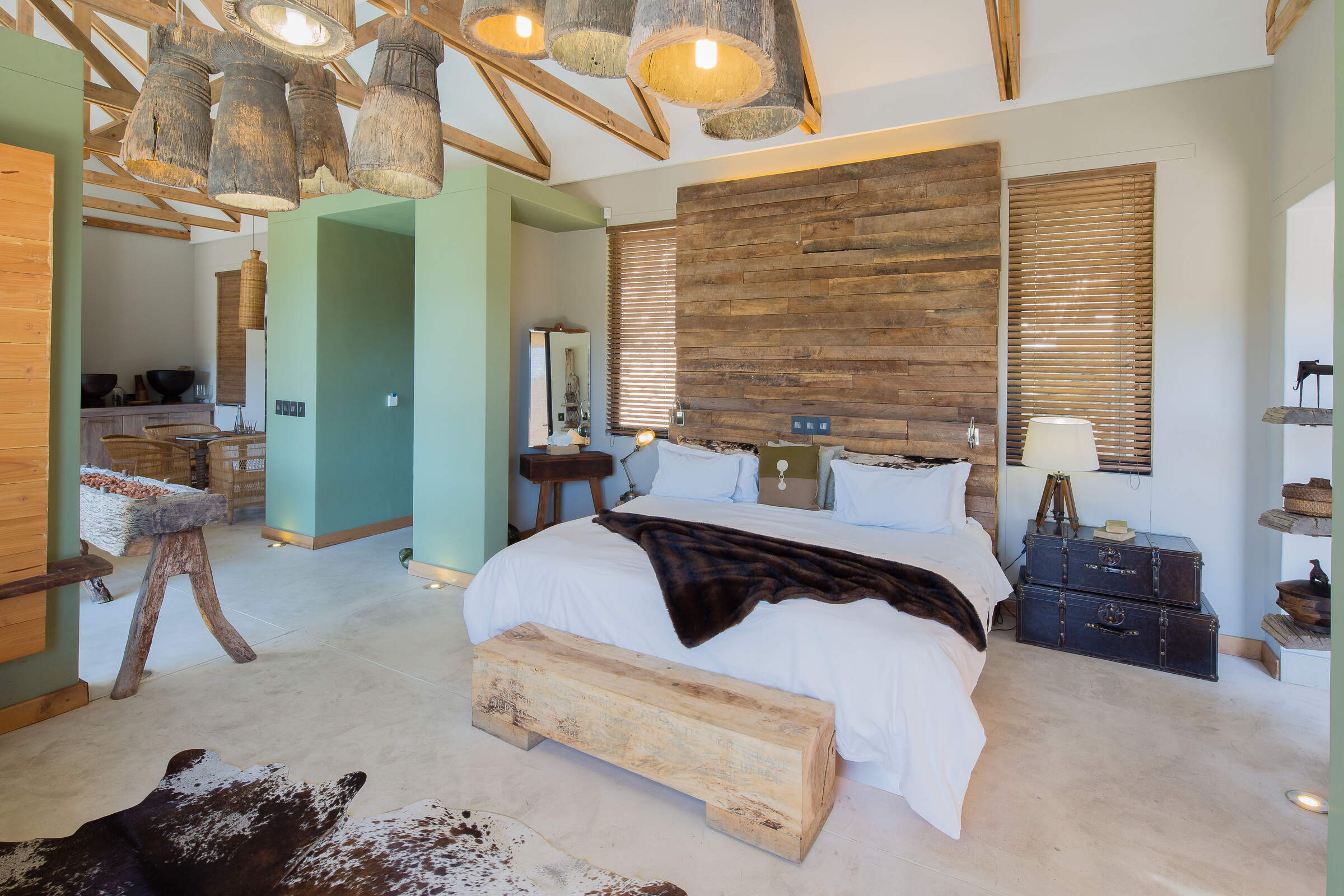
Olive Exclusive
The Olive Exclusive is perhaps Windhoek's most luxurious boutique hotel but remains a friendly and unpretentious place to stay.
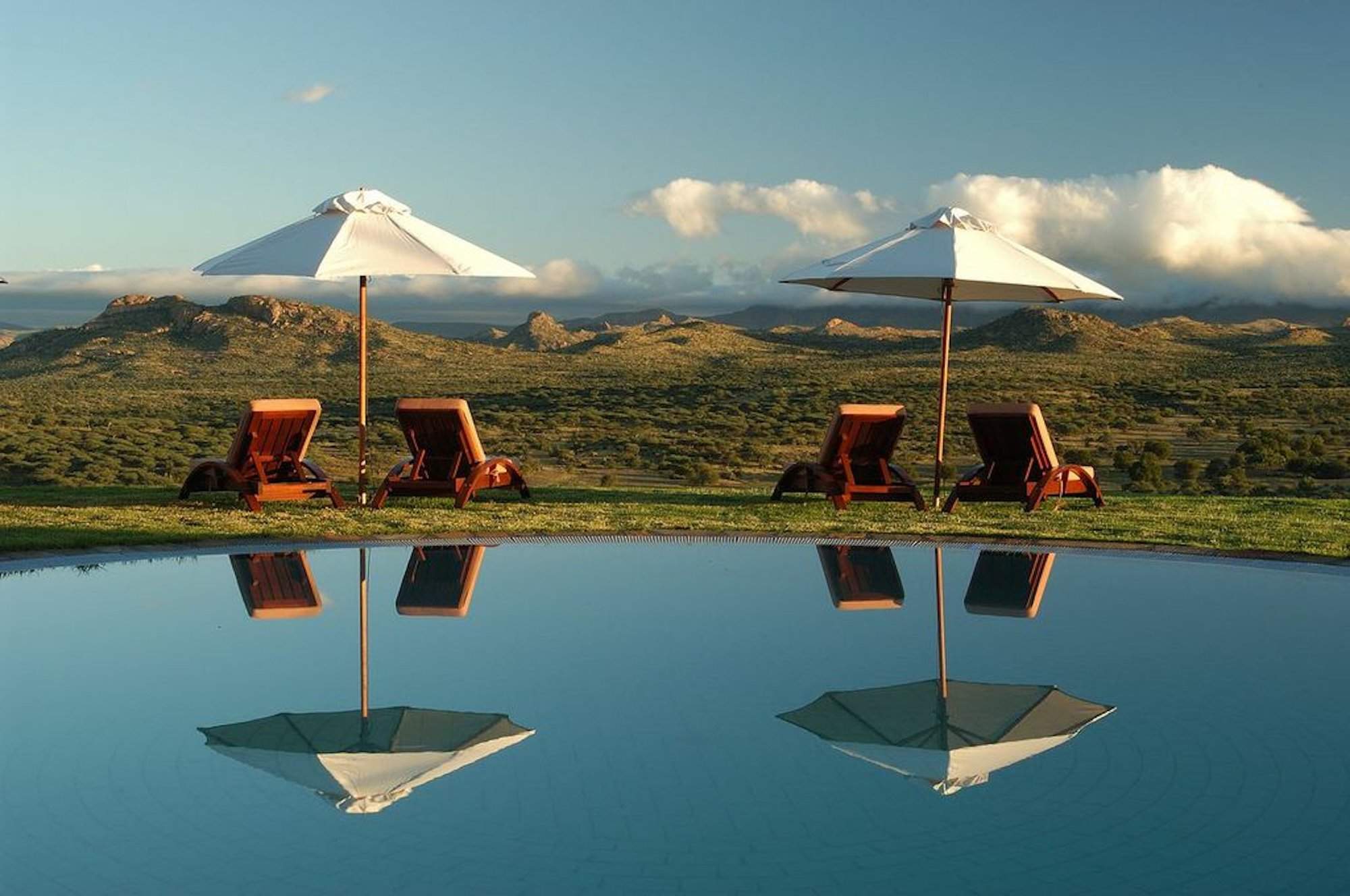
GocheGanas
For somewhere to really pamper yourself, Gocheganas Lodge & Spa offers wildlife combined with extensive wellness treatments.
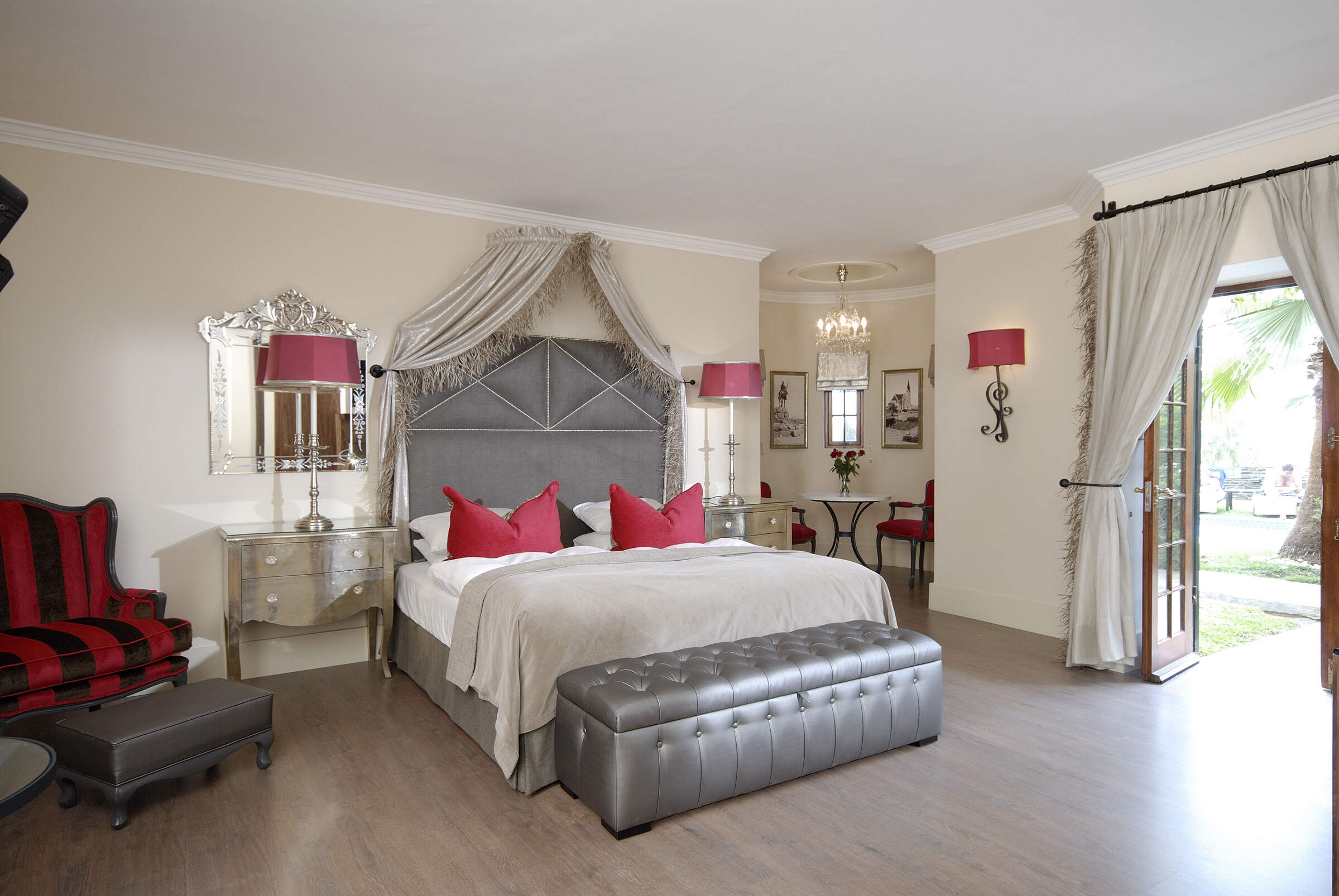
Heinitzburg Hotel
One of the oldest hotels in Windhoek, the Heinitzberg occupies a great hill-top location but can feel like a relic of a bygone era.
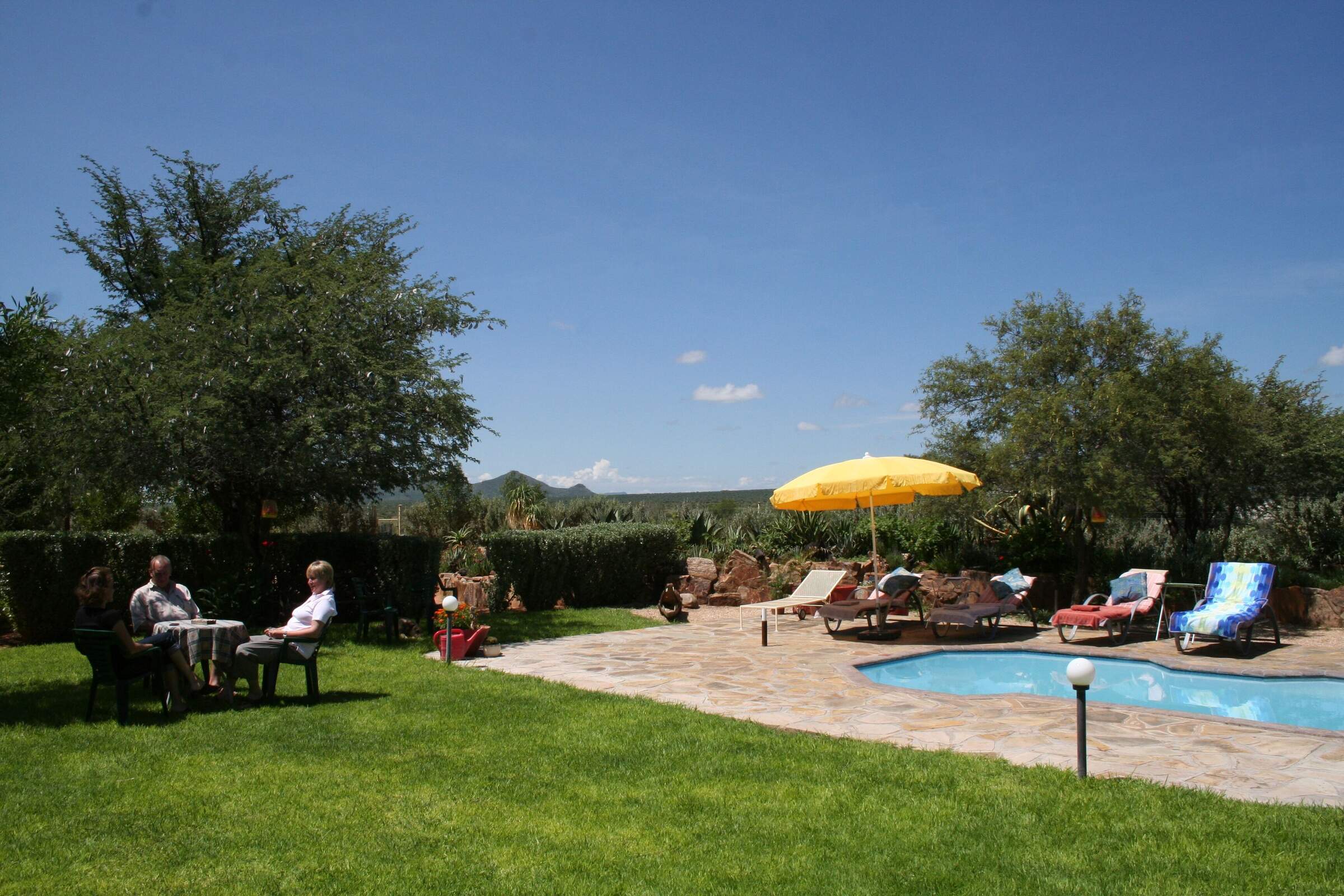
Etango Ranch G. Farm
Etango offers simple, clean, comfortable accommodation and it’s the closest accommodation to Windhoek International Airport.
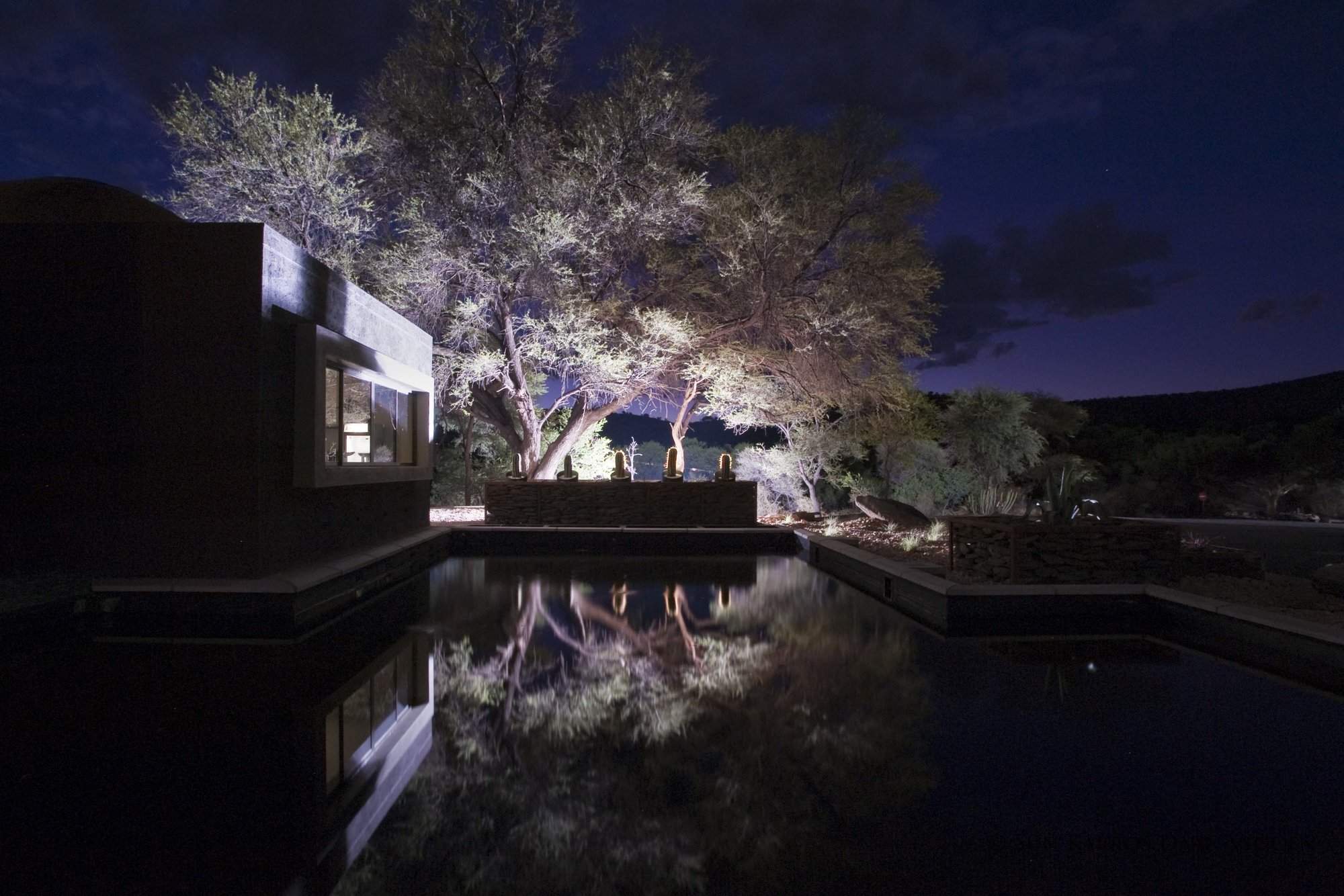
Sun Karros Daan Viljoen
Situated within the Daan Viljoen Nature reserve Sun Karros is a simple lodge with gentle game viewing and bird watching opportunities.
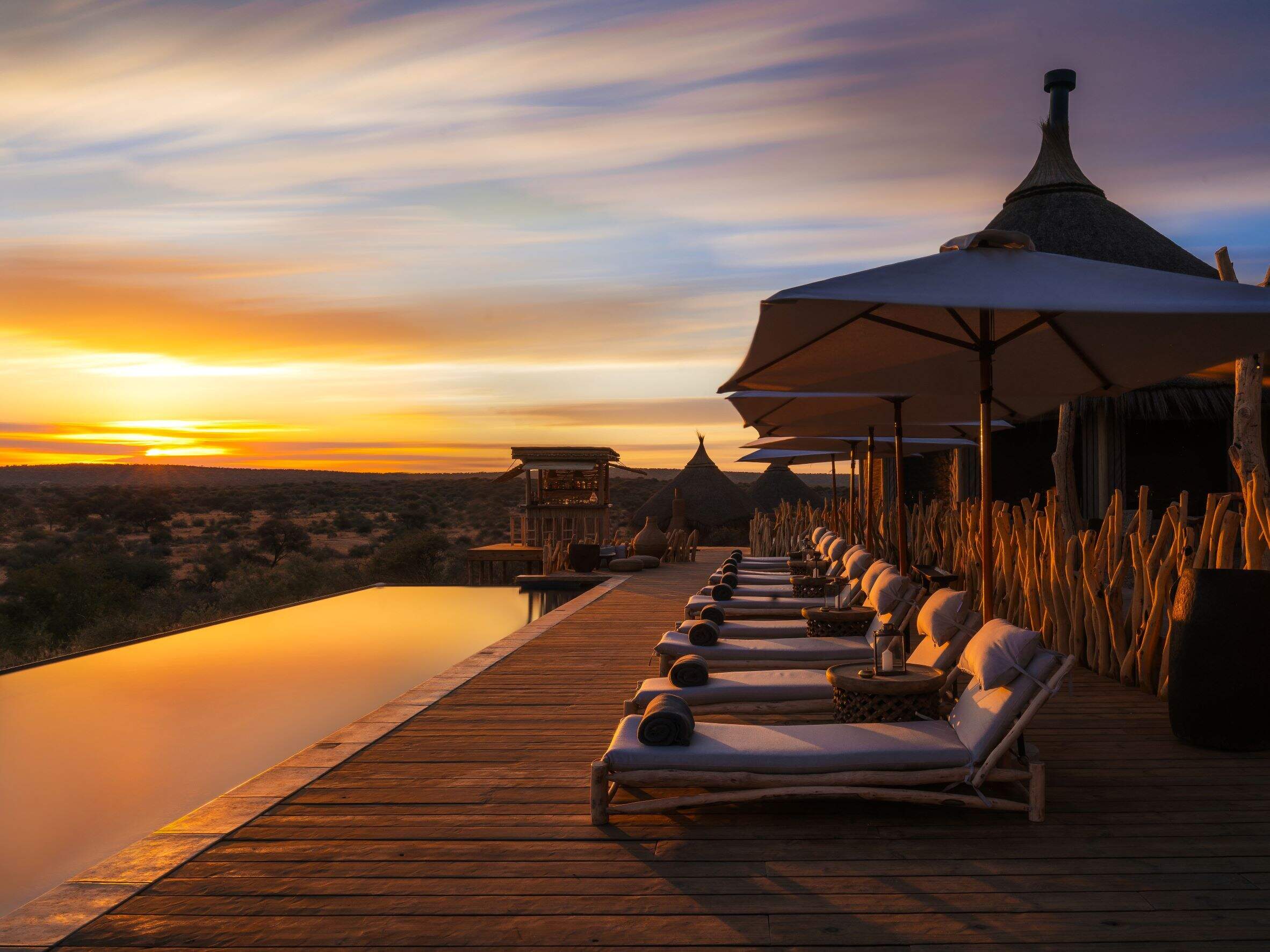
Omaanda
Omaanda offers luxury accommodation and wildlife viewing within easy reach of the international airport and Windhoek City.
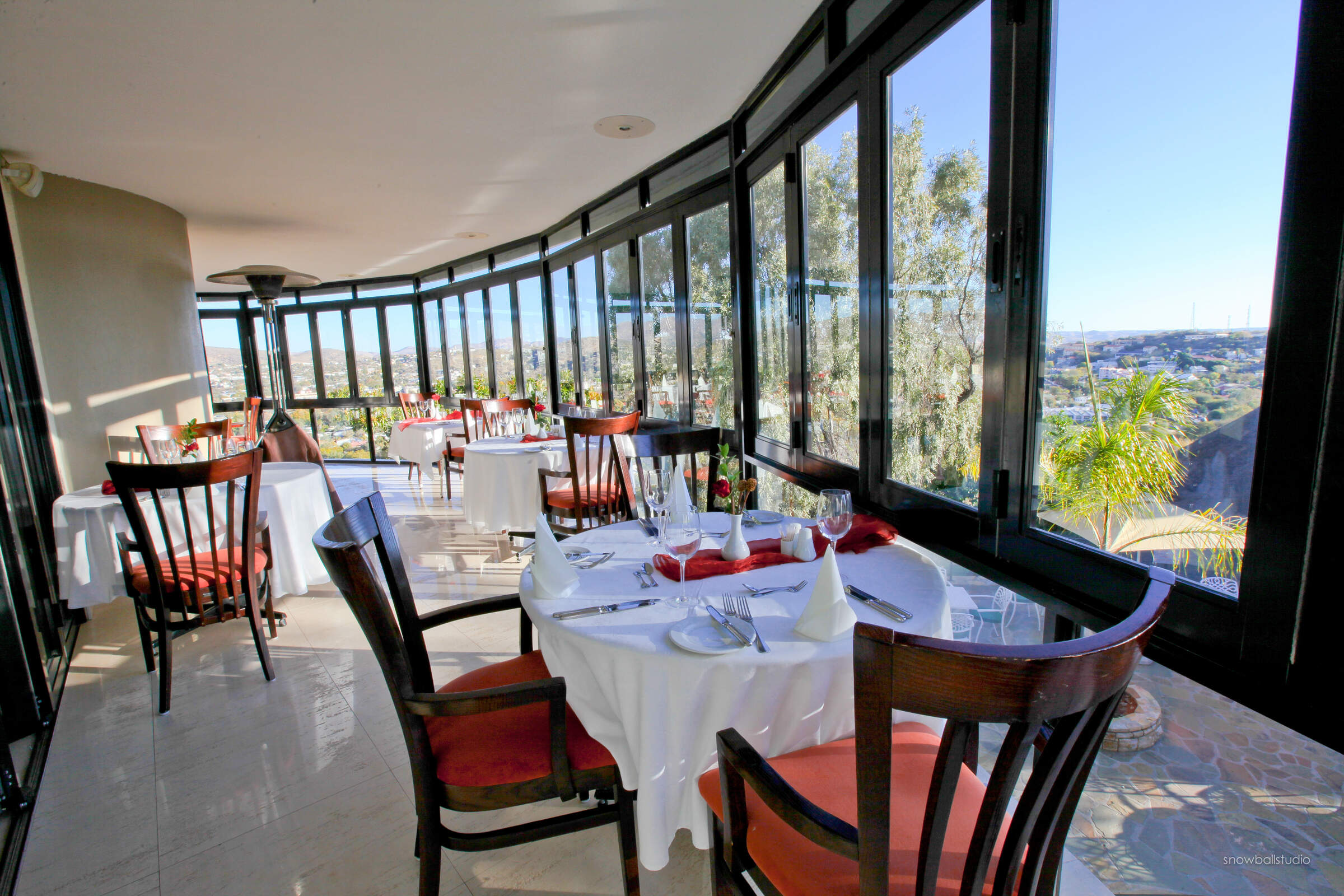
Hotel Thule
Windhoek’s Hotel Pension Thule offers stunning views across the city and a reputable in-house restaurant, within easy reach of the international airport.
When to go to Windhoek
Our month by month guide: What it's like to visit Immanuel Wilderness in Windhoek
Jan
Feb
Mar
Apr
May
Jun
Jul
Aug
Sep
Oct
Nov
Dec
Namibia in January
January is at the heart of Namibia’s rainy season. However, as you’d expect from a country dominated by desert and semi-desert environments, the rains are often (but not always) weak and usually quite localised. Some days will be clear, the strong sun raising temperatures to around 30ºC/86ºF; on others humidity and clouds build, sometimes culminating in spectacular thunderstorms. In extreme cases, these generate flash-floods which race down the beds of ephemeral rivers.
Across the country, the greening landscape makes a refreshing change, especially in desert areas. Many birds are in full breeding plumage and migrant species are here in force. In the north, where the rains are more reliable, the abundant water and food allows wildlife to disperse, making it trickier to spot.
- Variable weather: clear, hot & dry, or cloudy & humid with some rain
- Occasional, highly localised thunderstorms
- Many animals with young; birdlife at its most spectacular
- Wildlife dispersed & harder to see, especially in Etosha & the Caprivi
- Very few tourists (apart from the New Year) so rates mostly low
Our view
This is not a great time to visit
Weather in January
Namibia in February
February is the wettest month, but as Namibia is dominated by deserts, the rains are often weak and patchy. The variation in weather across Namibia is significant, too; the central highlands and Caprivi can see some heavy rain. More typically, some February days are clear with a hot, strong sun; others are cooler as cloudy skies build and, sometimes, culminate in short, spectacular thunderstorms. Occasionally these generate flash-floods, bringing ephemeral rivers to life and making travel more challenging.
Across the country, the landscape feels green and alive; insects and smaller animals are more easily seen, and many birds and animals are raising their young. However, small pools in the bush and thicker vegetation can make it hard to spot the wildlife.
- Variable weather: clear, hot & dry or cloudy & humid with some rain
- Occasional localised thunderstorms meander over the landscape
- The bush feels alive; birdlife is at its most spectacular
- Wildlife in Etosha & Caprivi is dispersed & harder to see
- Few tourists, so rates usually at their lowest
Our view
This is not a great time to visit
Weather in February
Namibia in March
March usually sees Namibia’s main rains tailing off, although actual precipitation varies hugely across the country and can be unpredictable from day to day. Many days will be clear, with a strong sun driving temperatures up. On others, clouds will build, and the late afternoon may see a short, spectacular thunderstorm. Such deluges reduce in both frequency and volume as the month progresses.
Across the country, landscapes are often vivid: a “green and pleasant land”. Many birds and animals are finishing raising their young, so smaller animals and insects are in evidence. In the north, where rains are generally heavier, pools in the bush and thicker vegetation can make it difficult to spot larger animals.
- Variable weather: clear, hot & dry or cloudy & humid with some rain
- Afternoon thunderstorms less common as March progresses
- Animals looking sleek and well-fed, after 3–4 months of plenty
- Wildlife in Etosha & Caprivi is dispersed & harder to see
- Few tourists visit during March, so rates often low
Our view
A good time to visit, with pros & cons
Weather in March
Namibia in April
Typically, April is dominated by dry weather; there’s an ever-decreasing chance of rain. Temperatures are now below their peak and continue to fall. Even so, days remain pleasant and warm, but there might be a slight chill in the air at night. The rains usually leave many parts of the country verdant and green, so animals are in fantastic condition – often with fast-growing young in attendance.
With the dust washed out of the atmosphere, photographers make the most of clear air, spectacular landscapes and healthy animals. Stargazers will have clearer night skies as the month progresses. In the game parks of Northern Namibia, water and food remain in plentiful supply, so finding big game can prove trickier than later in the year.
- Becoming drier &, especially at night, also cooler
- Few visitors, except around Easter, so rates remain low
- Wildlife in Etosha & Caprivi remains relatively hard to see
- Migrant birds have started to leave
- Fresh, clean air and often green, verdant landscapes
Our view
A good time to visit, with pros & cons
Weather in April
Namibia in May
By May, Namibia is usually drying out fast as the rains have ended. If they’ve been good, then the land remains green, but wildlife starts to congregate at more permanent water sources. Over much of the country the air quality and clarity can be amazing, making this an ideal month for photography.
Typical days are warm, with crisp, clear mornings and clear blue skies. Evenings are usually cool, and temperatures may dip below 10ºC (50ºF) overnight. Many lodges still charge “low season” prices, although with Namibia’s increasing popularity in recent years, some have started to introduce higher “shoulder season” rates.
May’s good-value rates, increasingly good wildlife sightings, beautiful landscapes and crystal-clear air combine to make this one of our favourite months in Namibia.
- Lovely weather: dry, warm days & cool nights
- The country is drying out although many landscapes remain green
- Fantastic air clarity – ideal for keen photographers
- Visitor numbers are often still low, mirrored by lodge rates
- Wildlife is starting to congregate more around remaining water
Our view
A very good time to visit
Weather in May
Namibia in June
Namibia is dry again. Skies are blue and usually largely cloudless. Days are lovely: warm and dry; nights are cold, sometimes below freezing in the desert. Most swimming pools in Namibia are always outdoors, making them too cold for all except the very dedicated.
Take a warm hat and gloves for game drives, where dawn and dusk will feel particularly chilly. In the north, especially Etosha, wildlife viewing is now into its dry-season pattern, focusing around the waterholes – though the park is still not busy.
Photographers come for superb air clarity, with minimal dust or smoke in the air. Historically, June rates have been low. However, with Namibia’s increasing popularity many lodges now count it amongst their “high-season” months, and request higher prices.
- Clear, bright days with blue skies; cold nights, mornings & evenings
- Great air quality, especially welcome for photographers
- “Shoulder season” for some lodges: lodge rates moderate
- Wildlife gravitates to waterholes, making game-viewing productive
- Some greenery in the landscape, depending on the last rains
Our view
A very good time to visit
Weather in June
Namibia in July
Reliably warm daytime temperatures (upwards of 20ºC/70ºF) and good wildlife sightings make this a popular month to visit Namibia. Rain would be very unusual indeed and clear skies make for great photographs. Once the sun sets, though, temperatures cool rapidly bringing cold nights that may dip below freezing in the desert. Be prepared: dress in layers and expect early-morning and late-afternoon drives, and anywhere coastal, to be cold.
As the land dries and vegetation shrivels, game congregates beside drinking water: Etosha’s waterholes are busy with animals. Across the country, lodges charge “high season” rates; many are fully booked a year or more in advance, especially during European school holidays (from the latter half of July to late August).
- Dry days, warm in the sun, with crisp, cold nights
- Cloudless skies: July is usually superb for stargazing
- The beginning of European school holidays so more families travelling
- Peak season: so high rates and many lodges fully booked far in advance
- A fantastic time of year for wildlife watching, particularly in Etosha
Our view
A very good time to visit
Weather in July
Namibia in August
August is the height of Namibia’s “winter”. Expect cloudless skies and plenty of warm sun in the day, but nights down to freezing in the desert. Dress in layers and bring warm clothes (including hats and gloves) for chilly starts and evenings. Only the hardiest even contemplate using outdoor pools.
It’s 3–4 months since any rain, so the land is dust-dry and much vegetation is golden brown. Many landscapes appear sparse and harsh. Wildlife congregates around available water sources, helping to guarantee good animal sightings.
Namibia is never really “busy” by the standards of Europe or the USA, but August is the most popular time to visit, especially for families. Book early (over a year in advance) if you want to stay at the best lodges.
- Dry days, warm in the sun; cold mornings, evenings & nights
- Cloudless skies in the day; spectacular stars at night
- Busy by Namibian standards: family rooms in particular demand
- Peak season: so high rates and many lodges fully booked far in advance
- A fantastic time of year for wildlife watching, particularly in Etosha
Our view
Fantastic: the very best time to visit
Weather in August
Namibia in September
September is a month of blue, cloudless skies and fantastic wildlife viewing. Rain is almost unheard of. As the month progresses, the days and nights get warmer. In some areas, daily maximums hit around the low 30s Celsius, although low humidity ensures this feels comfortable. The contrast makes the nights seem very cold. The air is becoming dustier, occasionally augmented by smoke from fires – so becoming hazy for photographic purists.
In the national parks, animals congregate around remaining water sources – making September one of the best months for game viewing. Hence it’s one of Namibia’s most popular months for visitors: a “high season” month that is often the time of choice for safari aficionados.
- One of the best months for wildlife viewing
- Warm days & cold nights, with temperatures rising during the month
- Many plants have faded from green to golden brown
- Air can be hazy – with dust & sometimes smoke
- High season rates; many lodges & camps are full 9 months in advance.
Our view
Fantastic: the very best time to visit
Weather in September
Namibia in October
Namibia is usually at its hottest and driest in October. Temperatures build as the month progresses; towards the end, daily highs may exceed 40ºC/100ºF, though with humidity close to zero, even this rarely feels oppressive.
In exceptional years, isolated rain showers may fall in late October. More usually, the end of the dry season sees wildlife watching at its best, particularly in Etosha. The place feels like a desert as spectacular herds of thirsty animals gather around the available water. October is popular amongst wildlife enthusiasts and commands peak-season prices, even if dust and smoke may make the air hazy, challenging photographers. Visitor numbers can fade towards the end of the month, allowing a window for last-minute bookings.
- Probably the most spectacular month for wildlife-viewing in Etosha
- Hot and dry: much of the country feels like a desert
- The air can be hazy with dust & smoke
- It’s peak time to visit, so expect high season rates
- Lodges & camps are full, especially early in October
Our view
A very good time to visit
Weather in October
Namibia in November
November is always a bit unpredictable: sometimes dry and hot; sometimes cloudier and cooler. Typically, mornings are hot and cloudless and clouds appear in the afternoon. Humidity builds and eventually breaks, resulting in spectacular thunderstorms that bring convection rainfall in late afternoons. Such storms are typically sparsely distributed and highly local – being completely absent from desert areas, for example. Places that do get good rain will flush green, with a tangible feeling of new life softening the landscapes. Many mammals give birth to their young.
Once any rains come, wildlife dissipates in search of food, and game viewing in Etosha becomes harder. Conversely, this is a great time for birdwatchers, with migrant species in breeding plumage.
- A very interesting, variable month, depending on the rains
- With rains come an amazing explosion of both vegetation & new life
- Wildlife viewing better in Damaraland than Etosha if it has rained
- Shoulder season: mid-range rates offer great value
- Away from the Namib, showers are more likely later in the month
Our view
A good time to visit, with pros & cons
Weather in November
Namibia in December
December is the first “proper” month of Namibia’s rainy season, and one of its hottest. Clear mornings give way to building clouds and, with luck, the occasional short, spectacular thunderstorm: refreshing and cleansing. These are often highly localised and generally warmly welcomed: most Namibians love rain!
Rains clear the air of dust. Even relatively short showers enable plant life to erupt, carpeting this thirstland in green and providing food for the young animals which abound. Animals disperse widely, which can make game viewing challenging. Many birds are breeding and so sporting their most colourful plumage.
Christmas and the New Year fall within local “summer holidays” – so places to stay can be surprisingly busy, especially in and around coastal towns, where temperatures are cooler.
- Hot and humid; sometimes refreshed by cooling showers
- Landscapes flushed green if/where there has been rain
- A tangible life and energy amidst this often green & pleasant land
- Very photogenic: blooming deserts amidst crystal-clear air
- Best time for birdwatchers; larger animals harder to spot
Our view
This is not a great time to visit
Weather in December

Looking for inspiration on where to travel next?
Visit our trip chooser to explore your options and find inspiration for your perfect African adventure
Inspire me